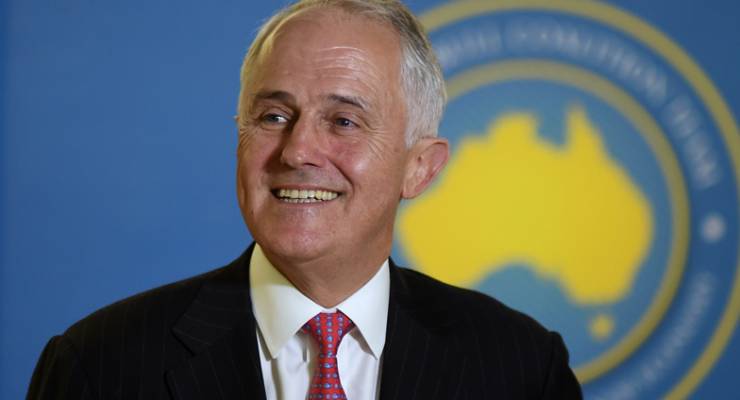
The campaign for company tax cuts is only just beginning.
This morning business indicated that the company tax cut plans are far from settled. At least in their minds. On Radio National’s Breakfast, Wesfarmers boss Richard Goyder said after the election he would push for the tax cuts for bigger corporations to be brought forward.
Further evidence of the business campaign ramping came yesterday with a three-page assault in The Australian Financial Review on the critics of the company tax cut economic modelling.
The government’s and business’ preferred economic modeller, Chris Murphy, director at Independent Economics, sought to defend his much-maligned economic modelling of what a company tax cut might deliver. In reality, and despite the sound and fury, he failed to lay a glove on his critics (and of course, the whole thing was a repeat of what had been in The Australian a few weeks earlier).
The Australia Institute has now shown there is no correlation across OECD countries between company tax rates and GDP per person. In data published today we do see there is a strong correlation between education spending and GDP per person, but when looking at the average company tax rate over the last 10 years and comparing GDP per capita measured using the OECD’s purchasing power parity (PPP) estimates, there is simply no correlation. While correlation does not equal causation, it is further evidence that there is no major link between company tax cuts and “jobs and growth” — especially if it’s paid for with cuts to education.
The one thing that every economist agrees on about the proposal to cut the corporate tax rate is that the impacts on “jobs and growth” will be small. Indeed, according to modelling of both Treasury and Independent Economics, the $50 billion worth of tax cuts mean that GDP would double by September 2038 — rather than December 2038, as it would without them.
But there is also much disagreement. Prime Minister Malcolm Turnbull says a $1 cut in company tax will deliver $4 in benefits — yet, according to Chris Murphy, the return is a mere $2.39. Keeping in mind the $50 billion cost of the corporate tax cuts, the $80 billion difference in the estimate of benefits is substantial.
[All hail the economic panacea of company tax cuts]
There are now a number of models of the Australian economy that purport to show that a company tax cut will result in an increase Australian economic benefit.
At the core of each model are two assumed mechanisms. First a cut in the company tax rate, by reducing the cost of capital increases investment and second, an increase in investment increases productivity, which “pushes up real wages, encouraging more labour supply”.
If the mechanism between capital and wages works, it should be apparent in the national figures but they show the wages share and capital output ratios are tax cuts moving in opposite directions.
The idea that a large supermarket chain or any other employer would hand you a wage increase because they put in new equipment does not stand up in the national figures. But to get that far we had to assume the first mechanism — a cut in the company tax rate — would increase investment.
The Australia Institute has shown that while company tax rates increased up until 1988, and then generally fell in the period to the present, the movement in investment is inconsistent with the tax-cuts-equals-growth thesis. It should have increased, theoretically, but it did not.
Another key assumption by Murphy is that cutting the corporate tax rate will lead to a big, voluntary, reduction in tax avoidance via profit shifting. Leaving aside the optimistic assumptions that drive the size of this assumed effect, it is important to note that no other policies for reducing tax evasion were modelled.
That is, the Independent Economics modelling can’t “show” that the best way to reduce tax evasion is to provide a big tax cut to all companies because it does not model any other options. It might be that reforming the law would deliver a similar benefit at much lower cost. It might even be that reversing the cuts to ATO staff in the 2014 budget might deliver a similar benefit at lower cost. But despite the $50 billion cost of the tax cuts, we don’t know. Just as modellers get to decide what assumptions to include, they also get to decide what policy scenarios get modelled.
Similarly, the modelling relied on by Turnbull does not “show” that tax cuts are the best way to spend taxpayers money, it assumes it. The modelling doesn’t compare spending $50 billion on tax cuts with well targeted investments in education, public transport, renewable energy or communications infrastructure for the simple reason that the government has no intention of pursuing such policies.
[Sorry, but when it comes to tax cuts, modelling ain’t evidence]
Economic modelling can help to reveal unexpected linkages between some economic variables or it can help to conceal the distributional consequences of expensive policy choices while keeping alternative policy options off the table.







Crikey is committed to hosting lively discussions. Help us keep the conversation useful, interesting and welcoming. We aim to publish comments quickly in the interest of promoting robust conversation, but we’re a small team and we deploy filters to protect against legal risk. Occasionally your comment may be held up while we review, but we’re working as fast as we can to keep the conversation rolling.
The Crikey comment section is members-only content. Please subscribe to leave a comment.
The Crikey comment section is members-only content. Please login to leave a comment.